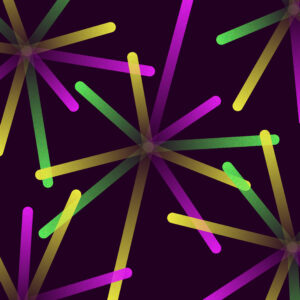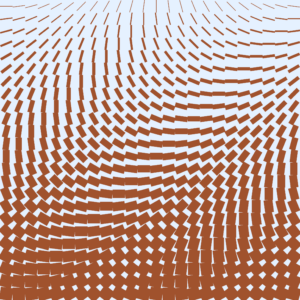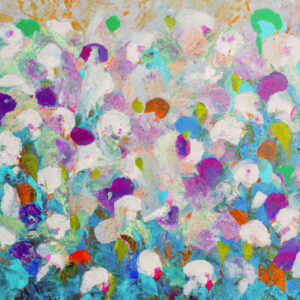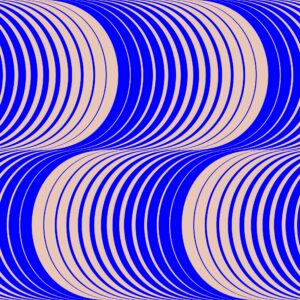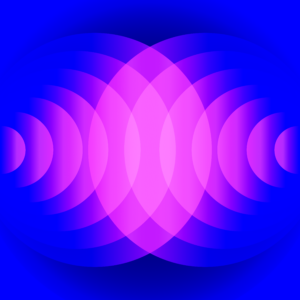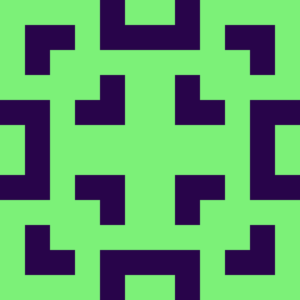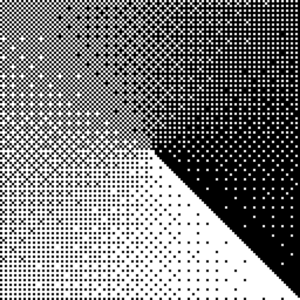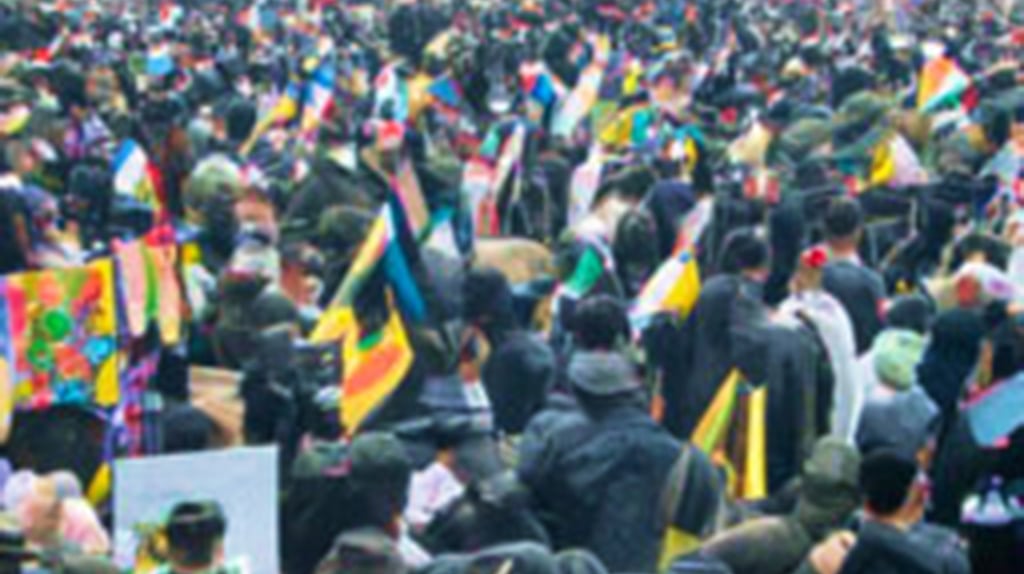
We observed that our internal predecessors to DALL·E 2 would sometimes reproduce training images verbatim. This behavior was undesirable, since we would like DALL·E 2 to create original, unique images by default and not just “stitch together” pieces of existing images. Additionally, reproducing training images verbatim can raise legal questions around copyright infringement, ownership, and privacy (if people’s photos were present in training data).
To better understand the issue of image regurgitation, we collected a dataset of prompts that frequently resulted in duplicated images. To do this, we used a trained model to sample images for 50,000 prompts from our training dataset, and sorted the samples by perceptual similarity to the corresponding training image. Finally, we inspected the top matches by hand, finding only a few hundred true duplicate pairs out of the 50k total prompts. Even though the regurgitation rate appeared to be less than 1%, we felt it was necessary to push the rate down to 0 for the reasons stated above.
When we studied our dataset of regurgitated images, we noticed two patterns. First, the images were almost all simple vector graphics, which were likely easy to memorize due to their low information content. Second, and more importantly, the images all had many near-duplicates in the training dataset. For example, there might be a vector graphic which looks like a clock showing the time 1 o’clock—but then we would discover a training sample containing the same clock showing 2 o’clock, and then 3 o’clock, etc. Once we realized this, we used a distributed nearest neighbor search to verify that, indeed, all of the regurgitated images had perceptually similar duplicates in the dataset. Other works have observed a similar phenomenon in large language models, finding that data duplication is strongly linked to memorization.
The above finding suggested that, if we deduplicated our dataset, we might solve the regurgitation problem. To achieve this, we planned to use a neural network to identify groups of images that looked similar, and then remove all but one image from each group.[^footnote-2]
However, this would require checking, for each image, whether it is a duplicate of every other image in the dataset. Since our whole dataset contains hundreds of millions of images, we would naively need to check hundreds of quadrillions of image pairs to find all the duplicates. While this is technically within reach, especially on a large compute cluster, we found a much more efficient alternative that works almost as well at a small fraction of the cost.Consider what happens if we cluster our dataset before performing deduplication. Since nearby samples often fall into the same cluster, most of the duplicate pairs would not cross cluster decision boundaries. We could then deduplicate samples within each cluster without checking for duplicates outside of the cluster, while only missing a small fraction of all duplicate pairs. This is much faster than the naive approach, since we no longer have to check every single pair of images.[^footnote-3]
When we tested this approach empirically on a small subset of our data, it found 85% of all duplicate pairs when usingK=1024 clusters.To improve the success rate of the above algorithm, we leveraged one key observation: when you cluster different random subsets of a dataset, the resulting cluster decision boundaries are often quite different. Therefore, if a duplicate pair crosses a cluster boundary for one clustering of the data, the same pair might fall inside a single cluster in a different clustering. The more clusterings you try, the more likely you are to discover a given duplicate pair. In practice, we settled on using five clusterings, which means that we search for duplicates of each image in the union of five different clusters. In practice, this found 97% of all duplicate pairs on a subset of our data.
Surprisingly, almost a quarter of our dataset was removed by deduplication. When we looked at the near-duplicate pairs that were found, many of them included meaningful changes. Recall the clock example from above: the dataset might include many images of the same clock at different times of day. While these images are likely to make the model memorize this particular clock’s appearance, they might also help the model learn to distinguish between times of day on a clock. Given how much data was removed, we were worried that removing images like this might have hurt the model’s performance.
To test the effect of deduplication on our models, we trained two models with identical hyperparameters: one on the full dataset, and one on the deduplicated version of the dataset. To compare the models, we used the same human evaluations we used to evaluate our original GLIDE model. Surprisingly, we found that human evaluators slightly preferred the model trained on deduplicated data, suggesting that the large amount of redundant images in the dataset was actually hurting performance.
Once we had a model trained on deduplicated data, we reran the regurgitation search we had previously done over 50k prompts from the training dataset. We found that the new model never regurgitated a training image when given the exact prompt for the image from the training dataset. To take this test another step further, we also performed a nearest neighbor search over the entire training dataset for each of the 50k generated images. This way, we thought we might catch the model regurgitating a different image than the one associated with a given prompt. Even with this more thorough check, we never found a case of image regurgitation.
- SEO Powered Content & PR Distribution. Get Amplified Today.
- PlatoData.Network Vertical Generative Ai. Empower Yourself. Access Here.
- PlatoAiStream. Web3 Intelligence. Knowledge Amplified. Access Here.
- PlatoESG. Carbon, CleanTech, Energy, Environment, Solar, Waste Management. Access Here.
- PlatoHealth. Biotech and Clinical Trials Intelligence. Access Here.
- Source: https://openai.com/research/dall-e-2-pre-training-mitigations
- :is
- :not
- 000
- 1
- 50
- a
- above
- Achieve
- actually
- Additionally
- algorithm
- All
- almost
- also
- alternative
- amount
- and
- Another
- appeared
- approach
- ARE
- around
- AS
- associated
- At
- BE
- before
- behavior
- Better
- between
- boundaries
- but
- by
- CAN
- case
- Catch
- Changes
- check
- checking
- Clock
- Cluster
- clustering
- compare
- Compute
- Consider
- contains
- content
- copyright
- copyright infringement
- Corresponding
- Cost
- could
- create
- Cross
- data
- day
- decision
- Default
- different
- discover
- distinguish
- distributed
- do
- done
- down
- due
- duplicates
- each
- easy
- effect
- efficient
- Entire
- error
- especially
- etc
- evaluate
- evaluations
- Even
- Every
- example
- existing
- Fall
- faster
- felt
- few
- Finally
- Find
- finding
- First
- five
- For
- found
- fraction
- frequently
- from
- full
- further
- generated
- given
- graphic
- graphics
- Group
- Group’s
- had
- hand
- happens
- Have
- help
- How
- HTTPS
- human
- hundred
- Hundreds
- hundreds of millions
- Hurt
- identical
- identify
- if
- image
- images
- importantly
- improve
- in
- include
- included
- information
- infringement
- inside
- internal
- into
- issue
- IT
- jpg
- just
- Key
- language
- large
- LEARN
- Legal
- less
- leveraged
- like
- likely
- linked
- longer
- looked
- LOOKS
- Low
- make
- many
- matches
- meaningful
- means
- might
- millions
- missing
- model
- models
- more
- more efficient
- most
- much
- necessary
- Need
- network
- Neural
- neural network
- never
- New
- no
- observation
- observed
- of
- often
- on
- once
- ONE
- only
- OpenAI
- original
- Other
- our
- out
- outside
- over
- ownership
- pair
- pairs
- particular
- patterns
- people’s
- performance
- performed
- performing
- phenomenon
- Photos
- pieces
- planned
- plato
- Plato Data Intelligence
- PlatoData
- practice
- present
- previously
- privacy
- Problem
- prompts
- Push
- Quarter
- Questions
- quite
- raise
- random
- Rate
- reach
- realized
- reasons
- remove
- Removed
- removing
- require
- resulted
- resulting
- same
- Search
- Second
- Settled
- showing
- similar
- Simple
- since
- single
- small
- SOLVE
- sometimes
- Step
- strongly
- studied
- success
- Take
- technically
- test
- tested
- than
- that
- The
- their
- Them
- then
- There.
- therefore
- These
- they
- this
- though?
- thought
- time
- times
- to
- top
- Total
- trained
- Training
- true
- try
- two
- understand
- union
- unique
- use
- used
- using
- verify
- version
- was
- Way..
- we
- WELL
- were
- What
- when
- whether
- which
- while
- whole
- with
- within
- without
- works
- worried
- would
- you
- zephyrnet

